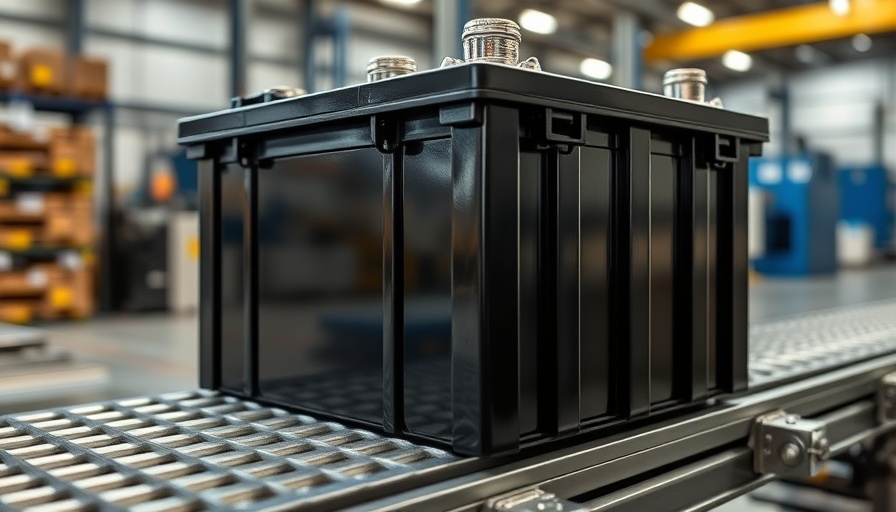
The Global Impact of Tariffs on Battery Production
In recent weeks, the landscape for the global battery industry has been rocked by a series of sweeping tariffs, introduced under President Trump's administration. The goal? To rejuvenate domestic manufacturing while slapping hefty taxes on imports, particularly from China, the world leader in battery production. As these tariffs take effect, their implications stretch far beyond mere pricing; they could profoundly alter the innovation and supply chains that underpin the energy transition vital for combating climate change.
Assessing Current Tariff Structures and Their Consequences
To understand how we arrived at this point, it’s essential to dissect the current tariff structures. Starting this April, the U.S. imposed a 34% tariff on all goods from China, compounded by a previous 20% tariff, culminating in an astonishing rate of 54%. With additional tariff rates in play, products reliant on Chinese components, like lithium-ion batteries, could see tariffs as high as 132% by 2026. This might lead to significant price hikes for electric vehicles (EVs), grid storage systems, and various consumer electronics, complicating the affordability of green technologies.
A Ripple Effect on Domestic Producers
While the intent of these tariffs is to bolster domestic production, the reality is complex. Many U.S. battery manufacturers depend on components sourced internationally. As tariffs increase costs on imported raw materials, U.S. companies may face two options: elevate their prices or absorb losses, both of which create a stagnant environment for innovation and competitiveness in the energy sector. Executives must prepare for this ripple effect and consider re-evaluating supply chain strategies in response to these new economic pressures.
Competing Globally in the Future of Energy
With China dominating over 75% of lithium-ion battery cell production, the U.S. is at a disadvantage in discussions around global energy independence. As tariffs tighten the economic noose on battery imports, there’s a growing urge for increased investment in domestic alternatives and research. Businesses will need to innovate their supply chains, shifting focus toward sustainable practices and local resources to reduce reliance on foreign components. Such movements adapt to this changing landscape can be powerful competitive advantages.
Exploring Alternative Solutions Amidst Tariffs
As tariffs threaten the accessibility and affordability of crucial battery technology, businesses might explore innovative pathways to mitigate the impact. Collaboration within industry sectors can drive local production. Companies can form partnerships to create shared resources, thus distributing costs and fostering a community that prioritizes sustainable energy solutions. This could be an opportunity to nurture homegrown technologies that bypass the adversities posed by tariffs.
Decisions Executives Must Consider Today
As these discussions evolve, decision-makers are presented with difficult choices. Internal assessments must consider the feasibility of local production capabilities versus continuing reliance on foreign suppliers. Furthermore, the understanding of customer price sensitivity amidst rising costs will be vital for retaining market share. Companies must also decide whether to absorb some of these costs or pass them on to consumers, a decision that could significantly affect brand loyalty and market positioning.
The Bigger Picture: Aligning Corporate Strategy with Climate Goals
Tariffs on battery imports are not simply economic policies; they reflect broader questions about our climate goals. Executives must align corporate strategies with the urgency of climate change, recognizing that affordable and accessible energy solutions are key to sustainability. This entails a long-term vision that integrates tariff impacts into strategic planning, ensuring both immediate business responses and future-proofing against upcoming market changes.
The landscape in which we are operating is more interconnected than ever. As tariffs fluctuate and the battery industry evolves, keeping an eye on these trends will be crucial for executives who wish to navigate the complexities of the modern market effectively.
 Add Row
Add Row  Add
Add 




Write A Comment